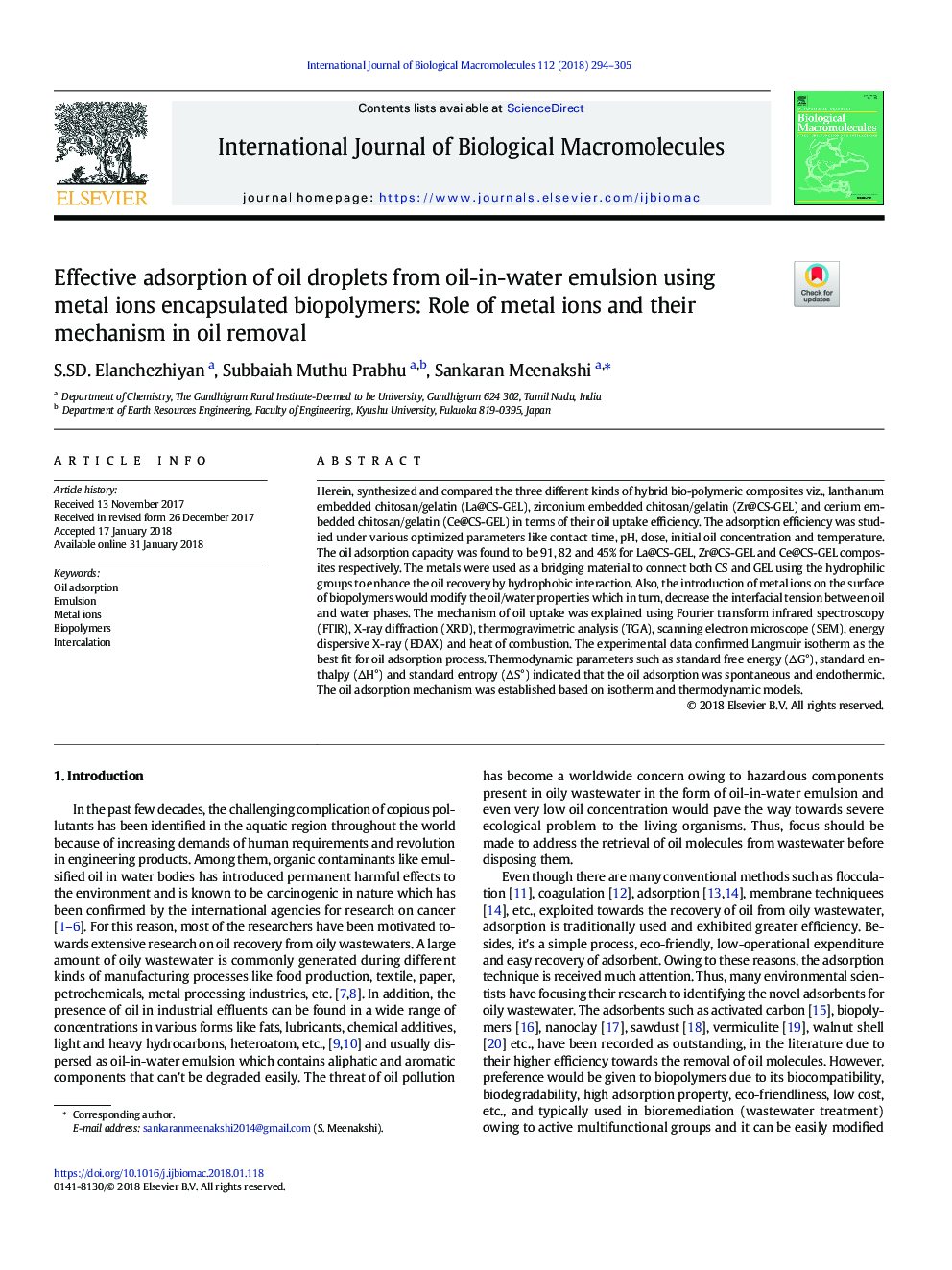| Article ID | Journal | Published Year | Pages | File Type |
|---|---|---|---|---|
| 8327593 | International Journal of Biological Macromolecules | 2018 | 12 Pages |
Abstract
Herein, synthesized and compared the three different kinds of hybrid bio-polymeric composites viz., lanthanum embedded chitosan/gelatin (La@CS-GEL), zirconium embedded chitosan/gelatin (Zr@CS-GEL) and cerium embedded chitosan/gelatin (Ce@CS-GEL) in terms of their oil uptake efficiency. The adsorption efficiency was studied under various optimized parameters like contact time, pH, dose, initial oil concentration and temperature. The oil adsorption capacity was found to be 91, 82 and 45% for La@CS-GEL, Zr@CS-GEL and Ce@CS-GEL composites respectively. The metals were used as a bridging material to connect both CS and GEL using the hydrophilic groups to enhance the oil recovery by hydrophobic interaction. Also, the introduction of metal ions on the surface of biopolymers would modify the oil/water properties which in turn, decrease the interfacial tension between oil and water phases. The mechanism of oil uptake was explained using Fourier transform infrared spectroscopy (FTIR), X-ray diffraction (XRD), thermogravimetric analysis (TGA), scanning electron microscope (SEM), energy dispersive X-ray (EDAX) and heat of combustion. The experimental data confirmed Langmuir isotherm as the best fit for oil adsorption process. Thermodynamic parameters such as standard free energy (ÎG°), standard enthalpy (ÎH°) and standard entropy (ÎS°) indicated that the oil adsorption was spontaneous and endothermic. The oil adsorption mechanism was established based on isotherm and thermodynamic models.
Related Topics
Life Sciences
Biochemistry, Genetics and Molecular Biology
Biochemistry
Authors
S.SD. Elanchezhiyan, Subbaiah Muthu Prabhu, Sankaran Meenakshi,
